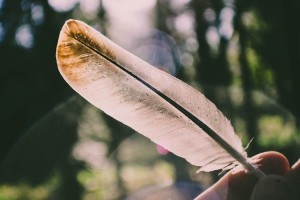Have you ever gone on vacation somewhere and after a few days start to converse, understand or make small talk with the locals or hotel staff? We often understand a language before we can speak it or write it. The best way to learn a language is to practice speaking it every day. Of course, learning to read and write a language is the way we are taught in schools (just thinking of grammar and conjugation drills in French class gives me anxiety), but immersing yourself even for a few hours a week is, in my experience, the best way to learn. While I recommend taking an Indigenous language course if you have the opportunity to, there are other ways of learning a language outside of an academic setting.
Here on campus, Ciimaan/Kahuwe’yá/Qajaq is a language initiative that offers events such as Indigenous language bingo, cultural workshops, conferences and other happenings to foster a language revitalization effort at U of T. Everyone is welcome, and it’s a great opportunity to meet new people on campus. Learn about CKQ and the Centre for Indigenous Studies by clicking here OISE also offers an abundance of Indigenous language resources, which you can learn about below. Click Here For OISE Language Information If you spend all of your time at school and want to venture out a little bit, the Native Canadian Centre of Toronto offers Anishnaabemowin, Cree, Mohawk and Oneida language classes, in addition to beading, sewing regalia, hatha yoga, hand drumming and other cultural classes. Memberships are $10.00 for full-time post-secondary students and include access to a variety of programs, cheap lunches Monday-Friday, discounts at the Cedar Basket gift shop and more much. All are welcome, and the space is fully accessible. Click here for more information on the NCCT As with everything… there’s an app for that! FirstVoices is a web-based resource that offers Indigenous languages archives, information, teachings, games and other language resources. If you’re looking to simply explore or even just hear what an Indigenous language sounds like, FirstVoices has over 63 Indigenous languages and curriculum to help you learn them. Learn how to say Mohawk, in Mohawk! (Kanien'keha) Click here for FirstVoices information During one of my lectures last week, my professor stated, “When a language dies, its culture and worldview goes with it.” It’s a simple statement yet so profound. Many Indigenous languages did not/do not have a written equivalent and an oral-based culture can carry 20,000 years of history embedded within in, along with its people, experiences and even a piece of the world. In fact, UNESCO released a report linking the loss of Indigenous languages with biodiversity. This would suggest that all things are connected, which is much aligned with Indigenous worldviews. I am happy (Wakatshennón:ni), then, to have the opportunity to learn my ancestral tongue and to be involved in the future generation of new speakers of Mohawk. Bye! (Ó:nen)One of the things that brought me to Toronto was to attend George Brown College for their American Sign Language and Deaf Studies program back in 2011. Many people—myself included, prior to taking that program—assume that there is a universal sign language or that sign language is a direct translation from English. In fact there are over 300 sign languages used around the world each with their own cultural contexts, signs, alphabets and history, and the structure, syntax and makeup of sign language is completely different than spoken English. I learned not only a new language and unfamiliar means of communication but also the worldview and culture of the Deaf community.
When I returned to school in 2016, I knew that I wanted to take another language course and when I saw that there was an Introduction to an Iroquoian Language course offered at U of T, I jumped at the opportunity and hoped I’d get in. The language turned out to be Mohawk, which was my great-grandparents’ mother tongue that they had spoken before attending residential schools. I have always wanted to learn it but the opportunities are scarce as Mohawk is one of many endangered Indigenous languages. Revitalization efforts are underway to generate new speakers and teachers and this course is taught by Professor Ryan DeCaire through the Centre for Indigenous Studies.



0 comments on “Indigenous Language Revitalization”